The Big Read in short: HDB void decks — social bonding spaces or pain points for residents?
SINGAPORE — For several years, residents living on the lower floors of Block 638 Woodlands Ring Road often had to tolerate the loud voices of people chatting late into the night at the void deck's public tables and chairs.
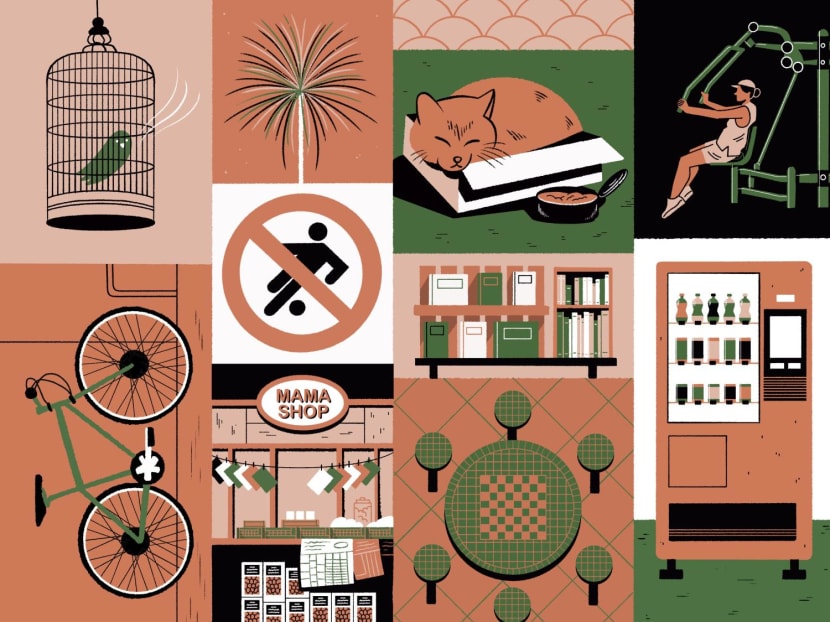
Dear readers, help us make your news reading experience better. We would appreciate it if you could take part in this quick survey. Thank you very much!
Each week, TODAY’s long-running Big Read series delves into the trends and issues that matter. This week, we look at the use of Housing and Development Board void decks, which has come under the spotlight recently after town councils closed off some parts due to disamenities caused by users. This is a shortened version of the full feature, which can be found here.
- HDB void decks initially served a primarily functional role to improve ventilation and prevent floods, before evolving to be a quintessential space for bonding between neighbours
- But recent closures of some such spaces by town councils due to disamenities caused by users have sparked debate on how to deal with disputes over the use of these community spaces
- While some residents believe the punitive measures taken by town councils are necessary, others feel they could make these community spaces “void” of activity
- Experts say fitting different and potentially conflicting functions into one space harmoniously can be an uphill task, especially as Singaporeans tend not to handle disputes in “ideal” ways
- Both experts and residents believe a more community-driven and educational approach should be encouraged to resolve conflicts
SINGAPORE — For several years, residents living on the lower floors of Block 638 Woodlands Ring Road often had to tolerate the loud voices of people chatting late into the night at the void deck's public tables and chairs.
The affected residents rejoiced in 2022 when Sembawang Town Council removed the concrete fixtures where the noisy night owls had tended to gather — but the new open space soon became the preferred venue for school children to play football games in the day.
Almost instantaneously, new seeds of discontent sprouted up in the same soil where the previous ones had been weeded out.
“Some of the residents here work (night) shifts, so they need rest when they come back. When the kids play football, they can whack (the ball) very hard and it’s very loud,” said Mr Harrison Yong, a 62-year-old retiree who lives in an adjacent block.
The town council partially cordoned off the void deck for more than a week in late 2023 in response to complaints about the noise.
This, Mr Yong said, was a “necessary measure” to get the message across to the children that they should not be playing there.
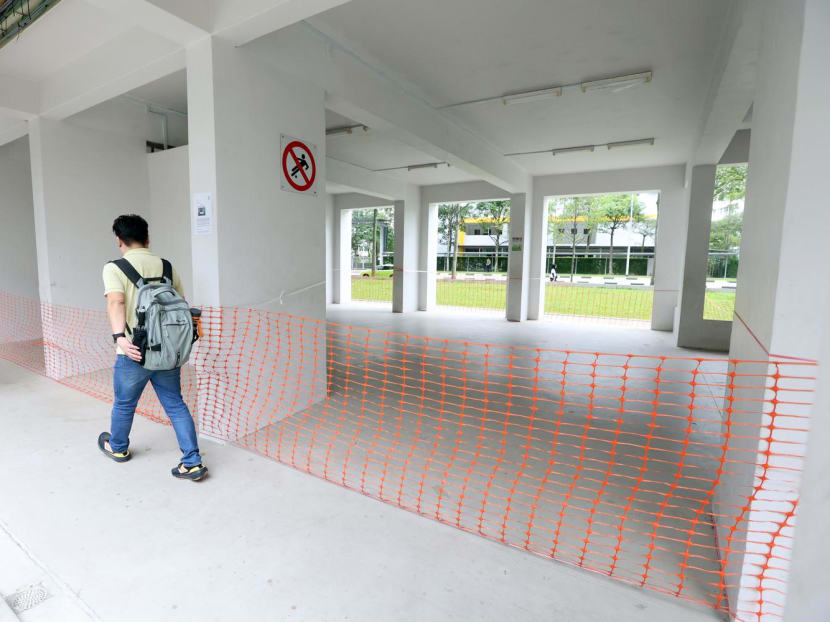
And it has worked. When TODAY visited the block on Monday (Jan 8), the void deck was no longer barricaded, and residents said that the football playing had stopped in recent weeks.
Meanwhile, a video posted on TikTok last week by sport and lifestyle blog TMSG also showed a multi-purpose hall in Pasir Ris with nails stuck on its walls — purportedly serving to puncture balls. The video garnered over 65,000 views and over 200 comments in six days.
Residents there said the nails have been in place for several years but had mixed opinions on whether such a measure was necessary.
“I think it’s a good measure so they won’t kick so hard. When they play, they’re not so violent because they know there are nails,” said 57-year-old driver Roger Ng, who lives in a Housing and Development Board (HDB) block beside the multi-purpose hall.
Another Pasir Ris resident who wanted to be known only as Ms Diana said that she feels “sad” about the town council discouraging kids to play there, as they might not have other options near their homes for such activities.
“I feel like it’s just part of community living. I don’t mind (the hall) being a bit dirty or noisy — just let people play, it’s a shared space,” she said.
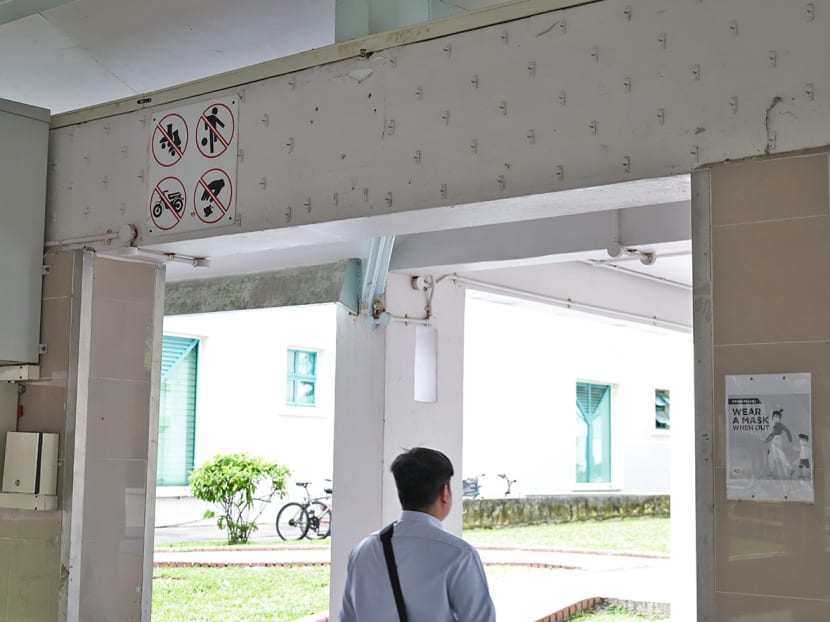
WHY IT MATTERS
Urban planners told TODAY that HDB initially built void decks for ventilation and flood prevention in dense urban areas.
But they have since evolved into vital community spaces that foster social interaction and strengthen community ties — in line with the Government’s efforts to forge social bonds in HDB estates.
Yet the recent incidents have thrown up questions about the role of void decks: Is their main purpose to facilitate social interactions? If so, should this function be prioritised over inconveniences caused to other residents? And how should town councils deal with disputes over the use of these spaces?
The matter even made it to Parliament, with Nominated Member of Parliament (NMP) Syed Harun Alhabsyi filing an adjournment motion on the issue.
“I can understand the challenges of the town councils in moderating complaints and disagreements on the ground. It is not easy,” he told the House on Tuesday.
However, Dr Syed noted that social cohesion between communities would be impacted whenever common areas of play are closed, and “areas of spontaneity” for activities like sports are restricted.
“The common space in residential estates equalises access, cuts across all layers of society and brings people together,” said the NMP.
“And because of the dynamic and spontaneous nature of such interactions, the mix is never constant, and that makes it beautiful for social cohesion.”
In response to Dr Syed’s adjournment motion, Minister of State for National Development Faishal Ibrahim said that certain interventions brought about by town councils in order to resolve disputes “may seem harsh”, but they are “necessary to balance the interests of all residents”.
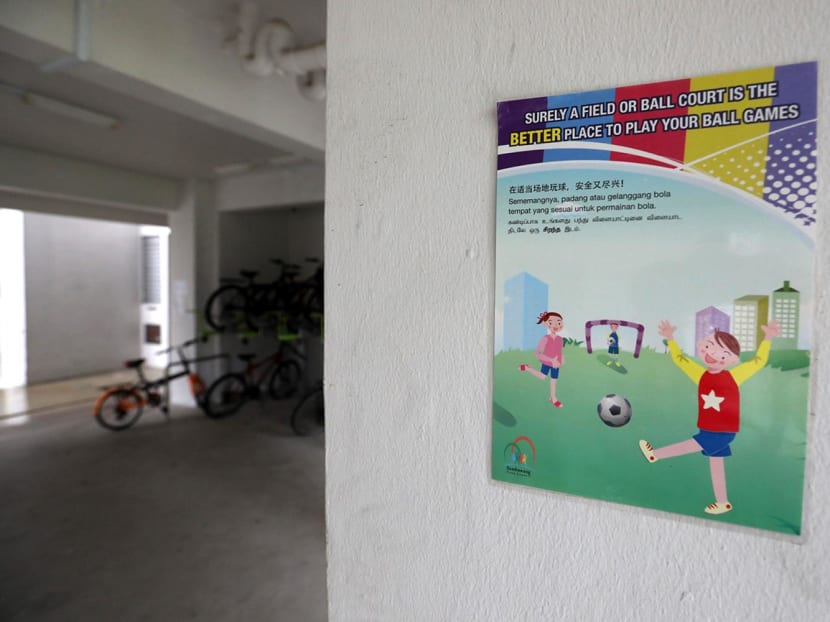
THE BIG PICTURE
Singapore’s void decks are unique because they “opportunistically” combine several different functions all within a tight, built-up area, said assistant professor Tan Shin Bin of the Lee Kuan Yew School of Public Policy at the National University of Singapore (NUS).
But trying to fit different and potentially conflicting functions into one space harmoniously is an uphill task, she added, citing the clash of opinions among residents over the years.
Furthermore, the tendency for conflicts to arise is a natural outcome of high-density living, said sociologist Shannon Ang of the Nanyang Technological University.
“The more people you put together, the more likely practices from one neighbour will conflict with the needs of another,” Dr Ang said.
But, Dr Ang observed, the ways in which Singaporeans choose to handle disputes are not ideal — like the common pattern of relegating the resolution of community conflicts to the state by submitting complaints to MPs or taking legal action, for instance.
Agreeing, Ms Suzanah Murad, who lives in an older HDB estate in Jurong, told TODAY that she believes Singaporeans can be “very rigid” in their approach to resolving disputes.
“Maybe it’s the way we’ve been educated or how we grew up. Our mindset is to complain about anything — the town council is first, then we go to our MP, then we go to the ministry,” said the 53-year-old executive assistant.
“Instead of thinking out of the box or finding other avenues to solve the issue, we’ll go to the town council… and it’ll be their fault if the problem isn’t solved."
Dr Ang added that due to society's strong emphasis on self-reliance over the years, people tend to be primarily concerned about improving themselves and their immediate families, seldom extending their efforts to the wider community.
“Without regular and considered interaction in the community, it is little wonder that conflicts tend to escalate when they arise," he said.
THE BOTTOM LINE
One way to work out a common solution amid communal friction is by taking an educational approach to the matter, said Assistant Prof Tan of NUS.
“Residents could be engaged in workshops to build consensus around which types of uses should be supported or restricted in void decks — and to brainstorm possible solutions to deconflict different functions,” she said.
Doing so could have multiple benefits of building community through engagement processes, she added.
For instance, the final outcome would be one that residents more or less agree with and are invested in upholding.
“If residents are more engaged, void decks could present an opportunity to become active sites for community empowerment than they currently are.”
While void decks may have had their share of bad publicity, there are also those which have become repositories of well-received community initiatives.
Some of them, like the popular and thriving community library titled Yishun Superhero Library, also have experience turning disputes into friendships.
Its primary caretaker, 69-year-old retiree Chia Kam Poi, told TODAY that not everyone had been happy with its existence, ironically because the users of a supposedly quiet space were causing noise disturbances to the residents upstairs.
Mr Chia had brought in comfortable seats for its users sometime in 2021, and the Superhero Library became an ideal place for people to sit and talk late into the night.
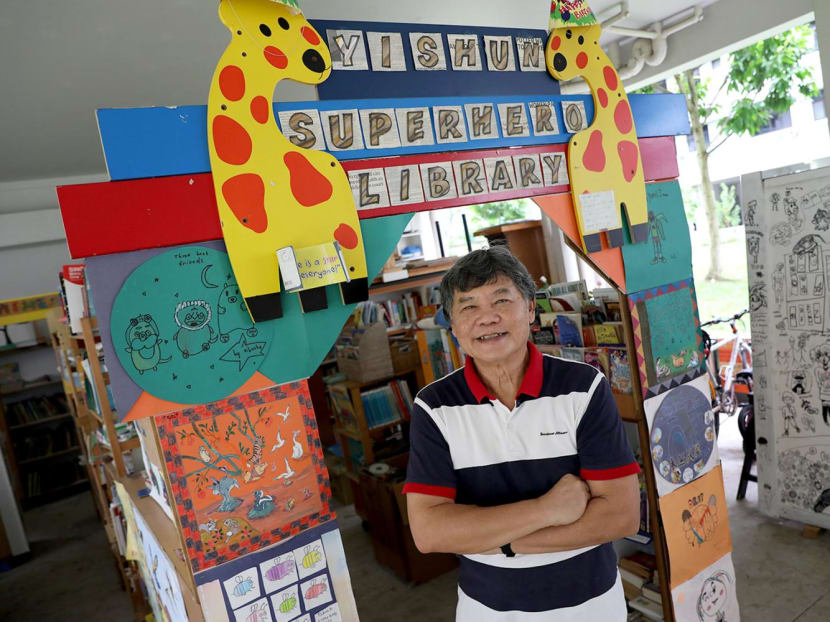
Since then, the library has implemented a no-chair policy and late night noise is no longer an issue. Mr Chia even quips that he is now friends with the residents who initially made those complaints — an example of how disagreements can lead to a mutual understanding in the wider community.
HDB residents around the country also told TODAY that such community initiatives can make neighbourhoods more vibrant and give people a reason to spend them with their neighbours.
In 2016, the HDB launched the Lively Places Programme to support community-led efforts to enliven public spaces in Singapore. It includes a fund which can provide Singapore citizens and permanent residents with reimbursements of up to S$20,000.
As of 2021, according to HDB, more than 180 residents and schools have initiated a variety of projects — including a lego-inspired workshop space at a void deck on Tah Ching Road and the painting of “Instagram-worthy” 3D wall murals on void deck walls in Woodlands Drive 62.
For sociologist Dr Ang, void decks present a unique opportunity for communities to express what they are about and how they negotiate communal living with each other.
“It gives communities a chance to fill the space with their imagination of how they want to live together.
“If void decks end up being more of a source of conflict instead of a place of possibility and promise — that’s on us.”











